Copper sulfate for processing trees
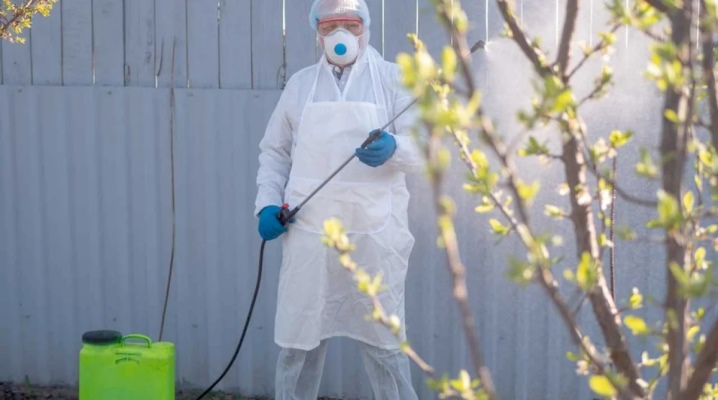
Garden owners regularly face challenges caused by climate change. Experienced gardeners process plants in a timely manner in order to increase their immunity during sudden changes or when humidity rises.
Treatment with an inorganic compound is considered to be the best way to increase the resistance of trees and eliminate about 2/3 of the insects and various manifestations of the disease. Agrochemical agent, copper sulfate, is in great demand for the treatment and prevention of plant diseases.
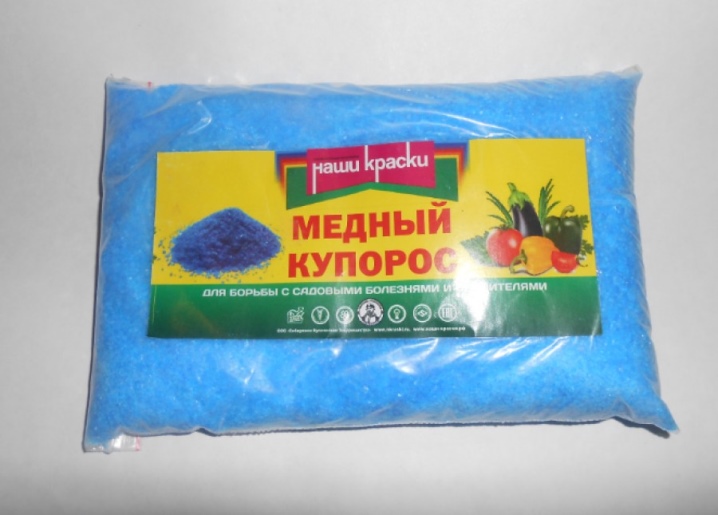
Properties and composition
Copper sulfate has other names, for example, "copper sulfate" or "copper sulfate". It is known as a fungicide that has several distinct properties and acts as:
- antiseptic;
- insecticide;
- antifungal agent;
- disinfectant preparation;
- astringent component;
- cauterizing agent;
- fertilizer.
Copper sulfate acts as a pentahydrate sulfate of bivalent copper, that is, there are 5 units of water per unit of copper. Most common as a blue crystal or blue powder, more often white.
Vitriol is especially effective due to the presence of the forming component - copper, soluble in sulfuric acid salt. It is she who is responsible for restorative and other processes.
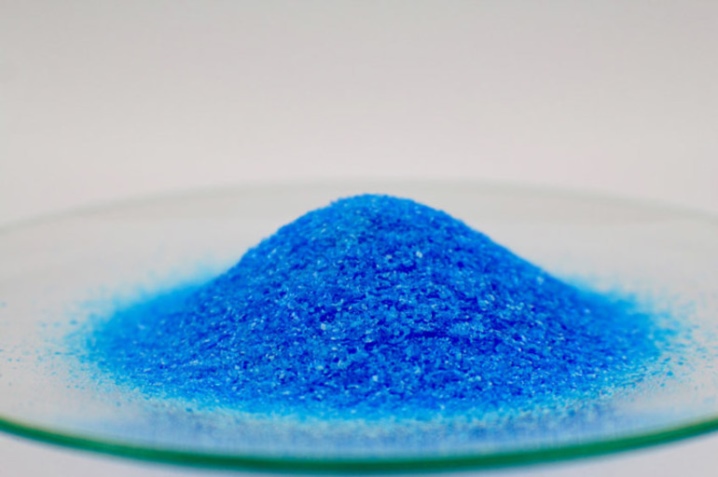
Processing time
Treat plants with copper sulfate with care. More than once the plants are not sprayed, as the excessive copper content leads to bad consequences. You can work in cloudy weather, but no precipitation.
Spring
As a rule, plant care begins in early spring, upon the awakening of plants after winter. This will strengthen the soil and prevent pests. Before the buds swell, the trees have an acute copper deficiency. Accordingly, the procedure is carried out before the end of the growing season. Trees require special care.
For the treatment of young trees up to 3 years old, a 1% solution of a fungicide with a volume of up to 2 liters is used, for old, fruiting plants - 6 liters of a 3% concentrate. For 3-4 years, the displacement increases to 3 per tree. At the age of 4-6 years, 4 liters of solution are used. The tops of trees, the surface of the earth, as well as the places where branches or bark are removed, are sprayed with a 1% solution of copper sulfate.
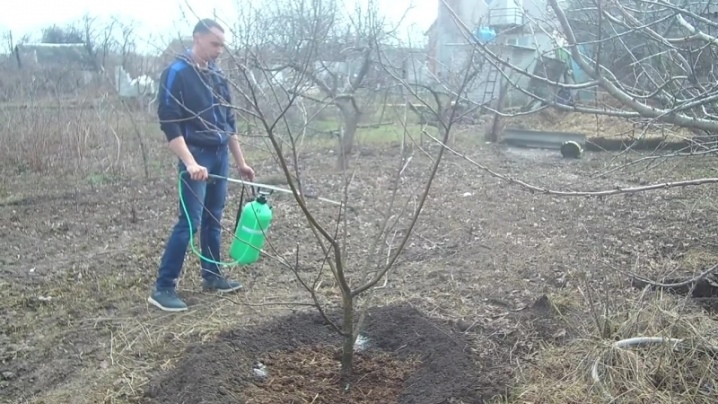
Summer
Processing in the summer is carried out in extreme cases. An inorganic compound can do far more harm than pests. Once on the leaves, the agent burns them, and damage to the fruit is dangerous to humans. Harvesting is allowed no earlier than a month after the end of spraying.
To destroy aphid colonies, up to 1% of the mixture is used, and for May beetles - no more than 2%.

Autumn
When there are no more leaves on the trees, treatment is carried out for the purpose of prevention. To protect the future harvest from fungal parasites, you need to prepare the soil for winter. The toxicity of the substance eliminates the sucking and gnawing inhabitants.
When all the leaves fall off, and the temperature is not higher than 5 degrees, you can start repeating the spring process from 1% for young and 3% for old and thick-bore plants.
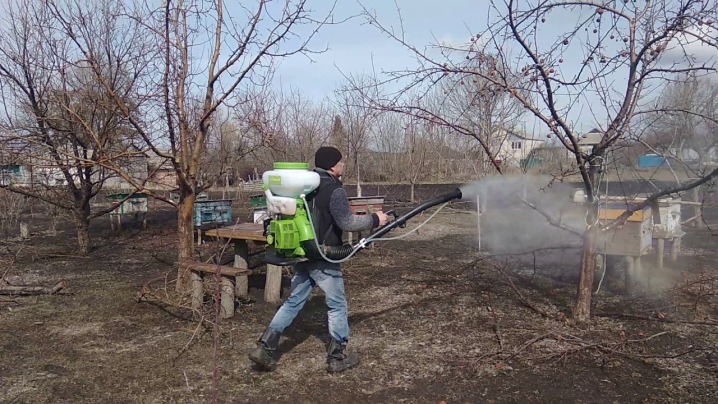
How to dilute?
For each plant culture, solutions are prepared individually. They must be diluted strictly following the proportions. If the dosage is not properly observed, the plant can be severely damaged. For each procedure, a fresh solution is produced and consumed without residue.
The concentration of the solution depends on the method of using vitriol on the site. The drug reacts with metal.Therefore, it is recommended to use a container made of plastic and glass during cooking in order to avoid oxidation processes. In this case, it is important to strictly adhere to the precautions.
- 1% essence (Bordeaux mixture) is obtained from water and an inorganic agent in a ratio of 100 g per 1 liter. Mix thoroughly and filter. You need to dilute with lime — 1: 1 to vitriol. No water is added to the finished concentrate.
- 3% solution - 300 g per 20 liters of water. Add half a liter of water and mix with pre-strained "milk" from 350 g of lime with one and a half liters of water. Finish the preparation with vigorous stirring to completely dissolve the powder.
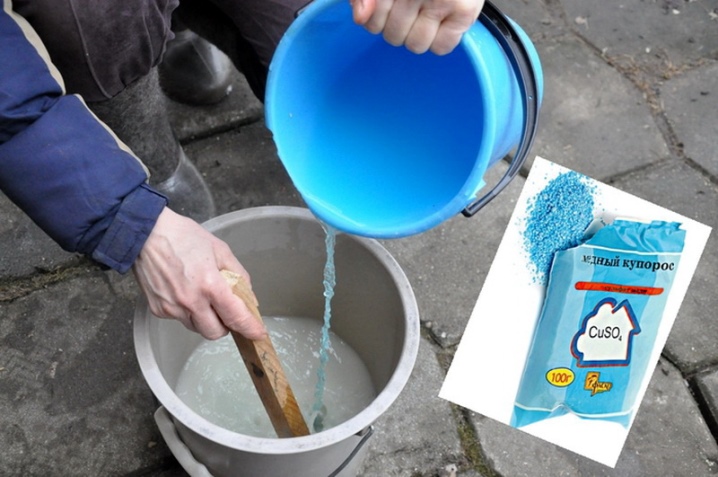
It is customary to prepare mixtures for 10 liters. 1 kg of the product must be diluted with 9 liters of hot water (at least 45 ° C), stirring constantly. You won't be able to make the right mixture in cold or warm water. The powder dissolves poorly, leaving a cloudy precipitate. After complete cooling, the resulting concentrate is thoroughly mixed, filtered and set to work.
To saturate the surface with a lack of copper (sandy, peaty), it is enough to scatter undiluted vitriol at the rate of 1 g per 1 sq. m. If the soil is affected by a fungal infection, a solution is required - 100 g of copper sulfate for every 10 liters. In case of complete infestation, the most potent is 3% of the product. Applying 300 g of powder to the same volume of water, the earth is completely etched.
Over the next year, nothing can be planted on this site. Such procedures are applied once every 5 years.

Agrochemical as fertilizer in solutions.
- Burgundy. For 1% concentrate, use 100 g of powder, 90 g of baking soda and 10 liters of hot water. For a concentrate in 2% - 400 g of a chemical preparation, 20 liters of liquid and 350 g of calcium-rich soda. The ingredients are bred separately. Dissolved soda is poured into the prepared vitriol. When dipped in the correct mixture, litmus paper turns red.
- Bordeaux. In summer, the leaves cannot handle saturated concentrates and undergo chemical combustion. Therefore, in the fight against premature yellowing of leaves, a light mixture of vitriol - 1 g per 10 liters will help.
- An essence is made against rot for 10 liters of water. In this case, no more than 50 g of powder is needed.
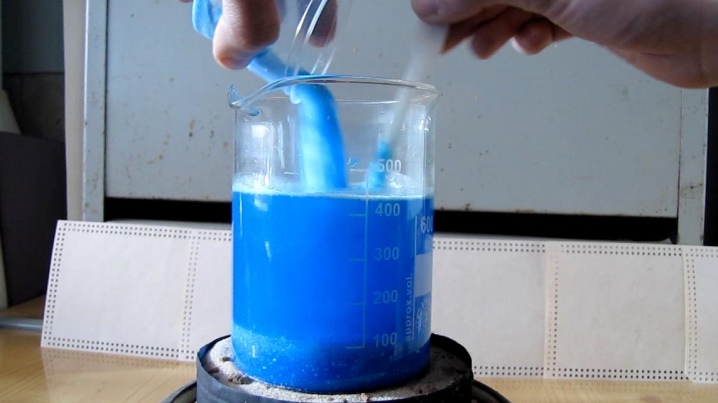
How to use?
The agrochemical has a wide range of uses. It has performed well in eliminating scab and other stains from stone fruit trees. The drug can be used to treat plants to protect the future harvest, preventing the appearance of mold, fungi, aphids and other pests (caterpillar, flower beetle). And its solution is more effective in treating trees from damage to leaves, trunks of fruit plants.
The foliar impregnation method is used for certain symptoms - the appearance of white spots on the leaves, sluggish or dying shoots. Based on copper sulfate, the impregnation is quickly absorbed and enriches the soil with the same amount of essential minerals as with conventional fertilization. This process is carried out through spraying the leaf plate during the period of intensive leaf growth.
Fertilization through the soil is carried out in early spring or early autumn every year until the culture is fully mature.
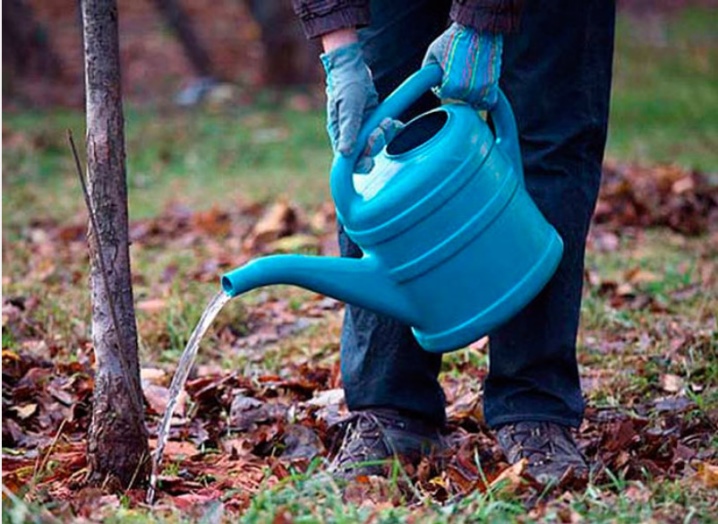
To strengthen the immune system of the tree and improve the taste of the crop, you need to properly process the plants. You should not water the seedlings more than the prescribed rate. An overdose of a poisonous substance will lead to burning of leaves and blooms. Timely spraying will allow you to properly prepare for the winter and protect the crop from pests and climatic changes.
Once every 5 years, open ground and greenhouses are disinfected with copper sulfate 2 weeks before sowing. This allows many plants to develop stably due to the acquired immunity.
Before planting root crops with a solution (100 g per 10 l), you can process the roots. For this the root system is soaked for several minutes, then thoroughly washed under running water and dries in the fresh air.
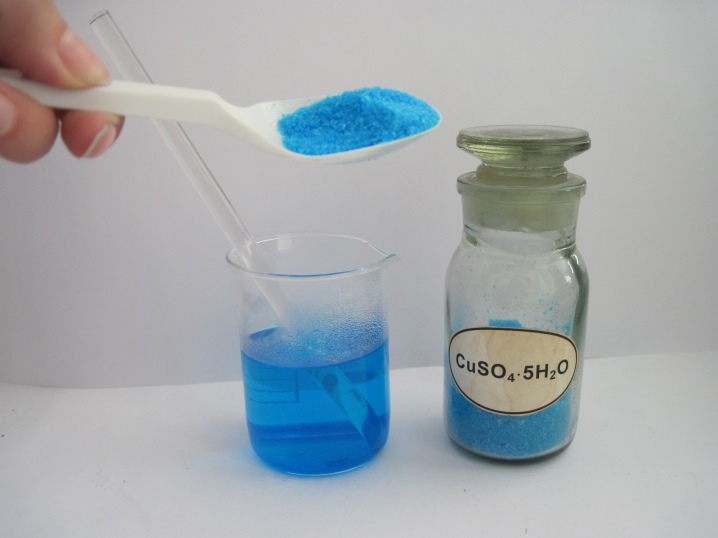
Security measures
The fungicide is considered agrochemical, it belongs to the 3rd hazard class. Dealing with him requires a certain amount of care. When working with copper sulfate, the following protective measures must be observed:
- dilute the mixture in a well-ventilated area;
- spraying is carried out in protective clothing, covering areas of the skin - gloves, glasses, respirator;
- work in extremely calm weather;
- it is forbidden to drink, smoke or eat in the process;
- discard gloves at the end of use;
- the mixture can be disposed of by mixing with sand;
- essences cannot be washed down the drain;
- change clothes, wash thoroughly with soap;
- when processing fruits, they must not be harvested earlier than the due date, since the reparation remains on the surface for a long time and can cause acute poisoning.
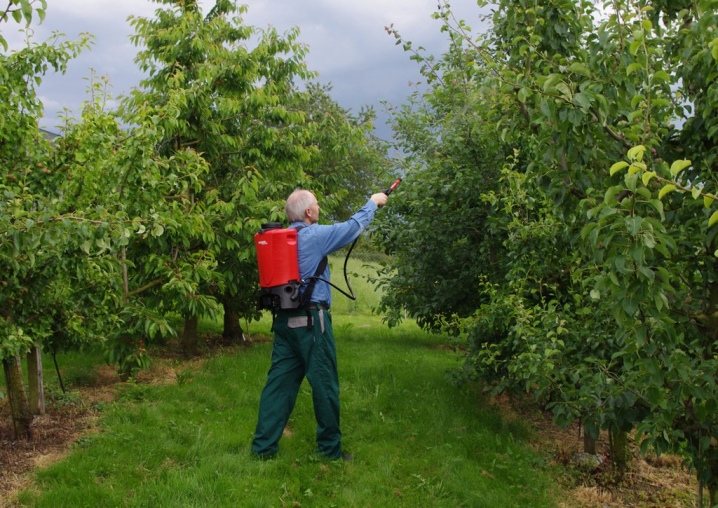
If the product comes into contact with open skin areas, the place is washed with plenty of warm water.
The entry of the chemical into the body causes a number of symptoms: nausea, profuse salivation, colic, or an iron taste in the mouth. Before an urgent visit to the clinic, they rinse the mouth, wash the stomach and take activated charcoal. If it enters the respiratory tract, the victim needs to rinse his throat and go out into fresh air.
The affected mucous membranes of the eyes are immediately washed with plenty of water. After elimination of painful sensations, it is recommended to consult a doctor for further examination of the damage.

See below for the treatment of plants with copper sulfate.













The comment was sent successfully.